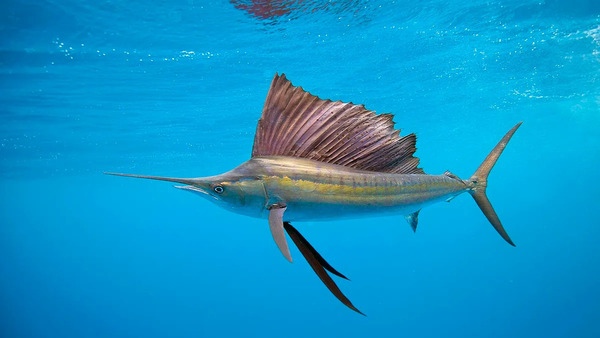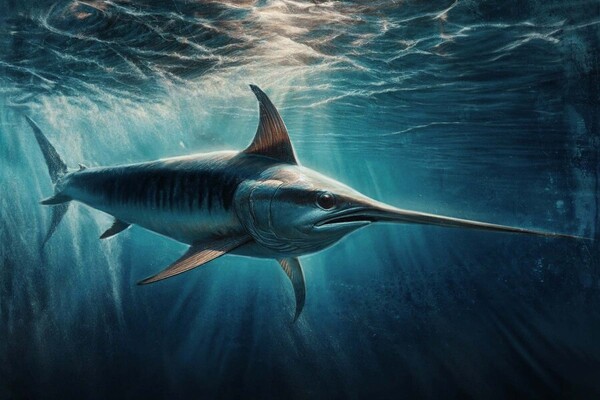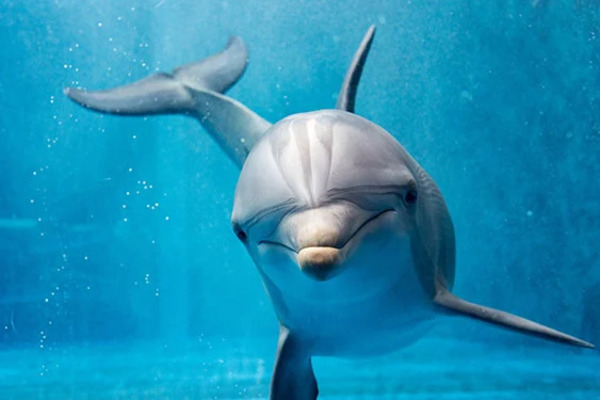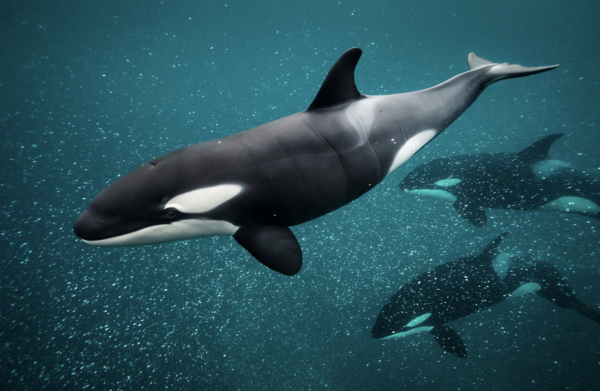The animal kingdom is full of incredible creatures that can do remarkable things. Among them, some are built to be swift in the water, gliding effortlessly through oceans and rivers. But when it comes to the question, “What animal can swim the fastest?”, the answer may surprise you. The fastest swimmer in the animal world is the black marlin — a majestic fish capable of reaching speeds up to 82 miles per hour (132 kilometers per hour)!
In this detailed article, we'll dive deep into the fascinating world of aquatic animals, exploring not only the black marlin but also other top contenders in the race for underwater speed. You'll learn about their unique adaptations that allow them to slice through water with ease and how these creatures compare to one another.
The black marlin (Istiompax indica) is a species of large billfish found primarily in the tropical and subtropical regions of the Indian and Pacific Oceans. These incredible fish are known for their sleek, aerodynamic bodies that help them reach astounding speeds in the water.
Here’s why the black marlin is such an exceptional swimmer:
Streamlined Body: The black marlin has a highly streamlined body, perfectly designed for cutting through water. Its body tapers to a narrow point at the tail, reducing drag as it moves.
Powerful Fins: Its pectoral fins and dorsal fin are small and tucked close to the body when swimming at high speeds, further reducing resistance in the water.
Strong Muscles: The black marlin's muscle composition allows for quick bursts of speed, enabling it to chase prey or escape from predators with incredible acceleration.
Large Bill: Like other marlins, the black marlin has a long, spear-like bill that it uses to slash through schools of fish, making hunting efficient at high speeds.

While the black marlin holds the title of the fastest swimmer, other animals come close, showcasing impressive swimming capabilities. Here are some of the top competitors:
Sailfish, often mistaken for marlins, are another species of billfish that can reach remarkable speeds in the water. They are known for their large dorsal fin (or "sail") and long bill. Sailfish can swim up to 68 miles per hour (110 kilometers per hour), making them some of the fastest fish in the ocean.

Swordfish are powerful swimmers, reaching speeds of up to 60 miles per hour (97 kilometers per hour). Their long, flat bill is used to slash through schools of fish, much like the black marlin. Swordfish are known for their strength and stamina, often making long migrations through the ocean.

Among sharks, the shortfin mako shark is the speed king. Reaching speeds of up to 45 miles per hour (72 kilometers per hour), the shortfin mako is known for its agility and fast swimming, which it uses to hunt down fast-moving prey like tuna and squid. This shark’s hydrodynamic body and powerful muscles make it one of the ocean's most efficient predators.

dolphins.html">Dolphins, particularly the common dolphin, are known for their speed and grace in the water. They can reach swimming speeds of up to 37 miles per hour (60 kilometers per hour). Dolphins are also highly intelligent and social animals, often swimming in pods and working together to hunt fish.

Killer whales, or orcas, are not only powerful hunters but also impressive swimmers. They can swim up to 34 miles per hour (56 kilometers per hour) when in pursuit of prey. Orcas are apex predators and are known for their complex hunting strategies and social structures.

Each of these aquatic animals has evolved unique adaptations that allow them to move swiftly through water. Here are some key features that make fast swimmers stand out:
Streamlined Body Shape: A streamlined, torpedo-like body reduces drag, allowing these animals to move quickly with minimal resistance.
Powerful Tail Fins: Most fast swimmers have strong, muscular tails or caudal fins that provide propulsion. By rapidly moving their tails side-to-side, they can generate the force needed for quick bursts of speed.
Hydrodynamic Fins: The fins on these animals are shaped in a way that minimizes resistance. In many cases, fins can be retracted or pressed against the body to further reduce drag at high speeds.
Efficient Musculature: Fast swimmers have specialized muscle fibers that allow them to sustain high speeds for short periods. Their muscles are often adapted for quick contractions and powerful thrusts.
When considering speed, it’s fascinating to compare animals across different environments. While the black marlin holds the title of the fastest swimmer, it’s still slower than some of the fastest animals on land and in the air:
Fastest Land Animal: The cheetah can run at speeds of up to 60-70 mph (97-113 km/h).
Fastest Flying Animal: The peregrine falcon is the fastest animal in the air, diving at speeds over 240 mph (386 km/h) when hunting.
Even though the cheetah and peregrine falcon may outpace the black marlin, the marlin's ability to swim at such high speeds is a testament to the incredible diversity and specialization in the animal kingdom.
For many animals, speed in the water is crucial for survival. Fast swimmers like the black marlin, sailfish, and shortfin mako shark rely on their speed to:
Catch Prey: Many of the ocean's fastest animals feed on smaller, agile fish. Speed is essential for chasing down and capturing prey before they escape.
Escape Predators: Being fast allows these animals to quickly escape from potential threats, increasing their chances of survival.
Migration: Some species, such as swordfish and dolphins, need speed for long migrations, ensuring they can travel vast distances in search of food or breeding grounds.
In the realm of aquatic speed, the black marlin reigns supreme as the fastest swimmer in the animal kingdom, with speeds reaching up to 82 mph. While other animals like the sailfish, swordfish, and shortfin mako shark come close, the black marlin’s unique adaptations make it a truly remarkable creature.
Whether chasing prey, escaping predators, or migrating across oceans, these fast swimmers showcase the incredible diversity and power of life in the water. The next time you think about speed in the animal world, remember that the fastest creatures aren’t just on land or in the sky — they’re also beneath the waves.
animal tags: Black-Marlin
We created this article in conjunction with AI technology, then made sure it was fact-checked and edited by a Animals Top editor.